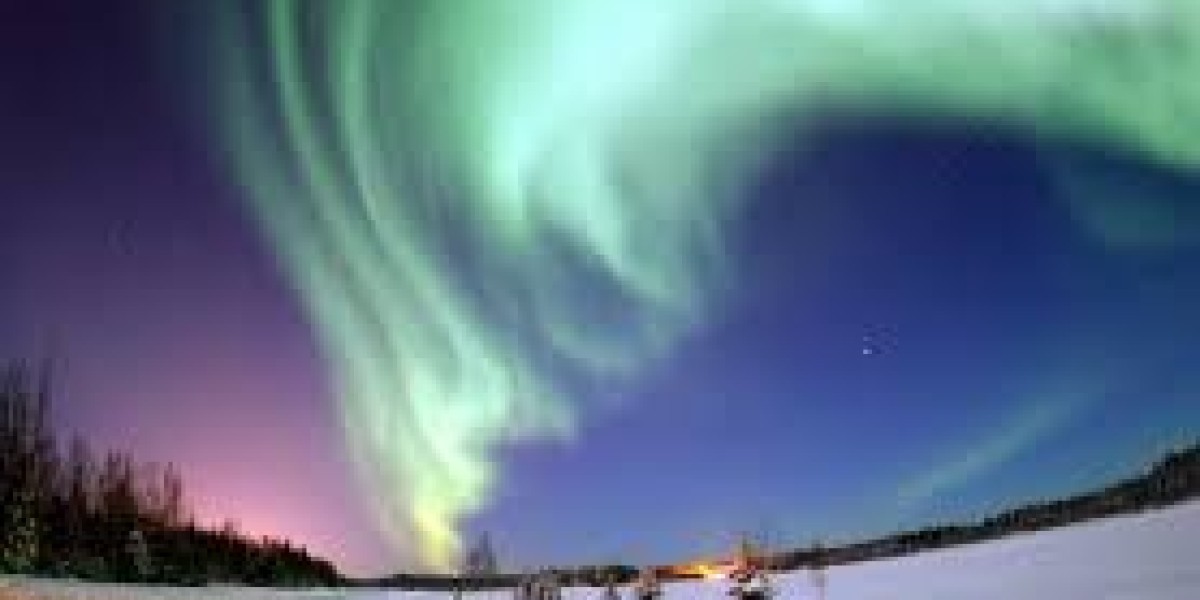The Aurora Borealis, often referred to as the Northern Lights, is one of the most awe-inspiring natural phenomena in the world. While these breathtaking light displays are typically associated with far northern regions like Norway or Alaska, parts of the United States also offer excellent opportunities to witness this spectacular show. If you're a nature lover, an adventurer, or simply someone who enjoys experiencing the wonders of the world, chasing the Northern Lights in the U.S. is a must. In this article, we explore the best places, times, and tips for experiencing this stunning natural phenomenon.
Understanding the Aurora Borealis
Before diving into the specifics of where to view the Aurora Borealis in the U.S., it's helpful to understand what makes these lights so unique. The Aurora Borealis occurs when charged particles from the sun collide with Earth's magnetic field, creating bursts of energy that manifest as colorful lights in the sky. This typically happens near the magnetic poles, which is why regions closer to the Arctic and Antarctic are most likely to experience these stunning displays.
These light shows can range in color from green to red, yellow, and even purple, depending on the type of gas particles that are interacting with the solar wind. While the Northern Lights are often seen in the polar regions, the aurora can sometimes be visible in parts of Canada and the northern U.S. during the winter months, especially when solar activity is high.
Best Places to See the Northern Lights in the U.S.
The Northern Lights can be elusive, but several spots in the U.S. offer prime viewing opportunities. If you're looking to witness the magic of the Aurora Borealis, here are the top destinations to consider:
1. Alaska
Alaska is undoubtedly one of the best places in the United States to catch a glimpse of the Aurora Borealis. Due to its location near the Arctic Circle, Alaska offers some of the clearest and most consistent views of the Northern Lights. Popular spots in Alaska include Fairbanks, Denali National Park, and the Brooks Range. The best time to visit is during the winter months, from September to April, when the nights are longest and the skies are darkest.
Fairbanks, in particular, is known as one of the top places in the world to see the Northern Lights. With its location right beneath the "Aurora Oval" – a ring-shaped zone where auroras are most likely to occur – visitors can often see the lights even on cloudy nights. Many tour companies offer Aurora viewing packages, complete with heated viewing domes and expert guides.
2. Minnesota
Minnesota, particularly its northern regions, is another fantastic destination for aurora watchers. Places like Voyageurs National Park, the Boundary Waters Canoe Area, and even Duluth offer great chances to see the Northern Lights. The state’s relatively low light pollution and clear skies make it a great choice for those looking to get away from the bustle of city life.
The best time to visit Minnesota for aurora viewing is from late September to March. During these months, the chances of a clear night sky are much higher, and the region experiences longer periods of darkness, which increases the likelihood of seeing the lights.
3. Michigan’s Upper Peninsula
The Upper Peninsula of Michigan, or the U.P., is a hidden gem for those seeking the Northern Lights in the U.S. This area, with its remote location and minimal light pollution, provides an excellent backdrop for viewing the Aurora Borealis. Areas like the Keweenaw Peninsula, Pictured Rocks National Lakeshore, and Isle Royale National Park are popular spots for aurora enthusiasts.
The best time to visit Michigan’s Upper Peninsula is during the winter months, though the Northern Lights can sometimes be visible in the fall and early spring. If you’re looking for an adventure, consider heading to Isle Royale, a remote island in Lake Superior, where the lack of light pollution ensures a clear, dark sky perfect for observing the lights.
4. North Dakota
North Dakota, particularly around Theodore Roosevelt National Park, is another great location for those hoping to catch the Northern Lights. Due to its remote location and lack of major cities, the region offers some of the darkest skies in the U.S., making it an ideal spot for stargazing and aurora viewing. The best time to visit is from late fall to early spring, when the nights are long, and the auroras are most likely to appear.
5. Maine
While Maine might not immediately come to mind when thinking about the Northern Lights, it offers some excellent opportunities for aurora viewing. The state's northern regions, such as Aroostook County, offer dark skies and minimal light pollution, making it possible to witness the Northern Lights. The best time to visit Maine for the aurora is from late September to April.
Best Time to See the Northern Lights
While it is possible to see the Aurora Borealis in the U.S. year-round, the best time to witness this incredible light show is during the winter months, when the nights are long and the skies are darkest. Late September to early April is typically the best window for aurora viewing. During these months, solar activity tends to be at its peak, and the cold, clear skies provide optimal conditions for observing the lights.
It’s also worth considering the timing of your trip based on the lunar cycle. A new moon provides the darkest skies, increasing your chances of seeing the aurora, as the light from a full moon can wash out the display. Check the moon phases before planning your trip to ensure the best possible experience.
Tips for Chasing the Northern Lights
Chasing the Northern Lights can be an unpredictable endeavor, but there are a few tips that can improve your chances of witnessing the magic:
1. Get Away from Light Pollution
One of the most important factors in seeing the Aurora Borealis is getting away from artificial light. Light pollution can obscure the aurora, so heading to remote areas with minimal city lights increases your chances of seeing a vibrant display.
2. Check the Aurora Forecasts
Several websites and apps provide real-time aurora forecasts, which can give you an idea of the likelihood of the Northern Lights appearing in your area. These forecasts are based on solar activity and can help you plan your viewing sessions for the best chance of success.
3. Dress Warmly
Seeing the Northern Lights often requires spending long hours outside in cold temperatures, especially in the northern U.S. Dress in layers, bring a warm coat, hat, gloves, and plenty of thermal wear to stay comfortable during your hunt for the aurora.
4. Be Patient
Aurora displays are often fleeting, and there’s no guarantee that you’ll see them during your trip. Be prepared for long hours of waiting and enjoy the experience of being surrounded by nature and the peaceful night sky.
Conclusion
While the Aurora Borealis is most commonly associated with high-latitude regions like Alaska and Scandinavia, the Northern Lights can also be seen in the northern parts of the U.S. From Alaska to Michigan, there are many destinations where you can witness this natural wonder. Whether you’re planning a trip to one of these locations or simply daydreaming about the possibilities, the Aurora Borealis is an unforgettable sight that should be on every adventurer’s bucket list.
So pack your warmest clothes, head to the dark skies of the U.S. North, and get ready for an experience that will leave you in awe of the beauty of the natural world.









